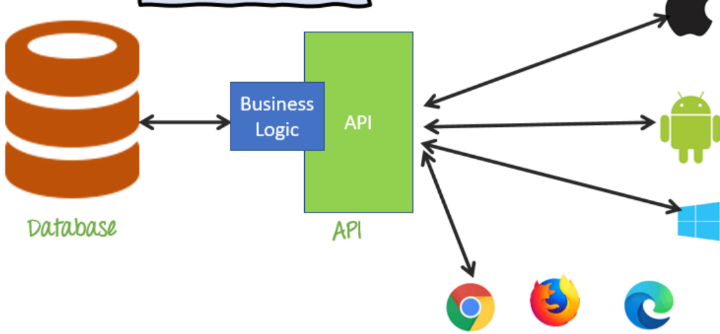Description
.png)
Disclaimer: Copyright infringement not intended.
Context
- Shri Amrit Lal Meena, Secretary, Ministry of Coal chaired a meeting on the integration of Unified Logistics Interface Platform (ULIP) with the digital systems of the Ministry of Coal.
ULIP
About
- Unified Logistics Interface Platform (ULIP) is a part of the National Logistics Policy (NLP).
- It was launched by Prime Minister Shri Narendra Modi on September 17, 2022.
Aim
- It aims to bring ease of doing business in the logistics sector by -
- simplifying the logistics processes,
- improving its efficiency,
- bringing in transparency and visibility, and
- reducing logistics cost & time.

Overview of Unified Logistics Interface Platform (ULIP)
- Logistics has been given special focus in the last few years. Many measures in terms of hard and soft infrastructure have been taken to improve the logistics scenario of India.
- However, an integrated view of the Indian logistics value chain is necessary and a unified system by the interconnection of the IT systems of various union ministries, state departments, governing bodies, and private service providers is required.
- Additionally, for stakeholders to receive logistics-related services, visibility, authorizations, and certifications of the cargo seamlessly, all IT systems need to be interconnected.
- Unified Logistics Interface Platform (ULIP) is designed to enhance efficiency and reduce the cost of logistics in India by creating a transparent, one-window platform that can provide real-time information to all stakeholders.
- It was also emphasized that the solution should have the visibility of multi-modal transport, and all the existing systems of various ministries, governing bodies, and private stakeholders should be integrated with the ULIP system.
There are three key components which are defining the ULIP platform:
- Integration with existing data sources of ministries: As authorization, compliance and clearance are some of the critical activities of Logistics; the integration with data points of ministries shall enable a holistic view and interlink the handshaking points.
- Data exchange with private players: To enable the private players, logistics service providers, and industries to utilize the data available with ULIP and at the same time share their data (transportation, dispatch, delivery, etc.) with ULIP, thereby streamlining the processes to bring better efficiency through data exchange.
- Unified document reference in the supply chain: To enable a single digitized document reference number for all the documentation processes in a single platform. ULIP shall enable start-ups and private organizations to build the presentation layer, encompassing various use-cases to serve the service, trade and logistics service providers.
Mandate
- ULIP has a dedicated portal that makes the process of data request simpler, faster, and transparent.
- It is designed to bring all modes of transportation under a single window and connect all stakeholders to provide real-time visibility information.
- At present 33 systems from seven ministries are integrated through 106 Application Programming Interfaces covering more than 1600 data fields for usage by the stakeholders.
- It is to be leveraged to bring down logistics costs and improve efficiency.
|
API
API is defined as a code that helps two different software’s to communicate and exchange data with each other. It offers products or services to communicate with other products and services without having to know how they’re implemented.

|
Benefits of Using ULIP
Improved Efficiency
- ULIP allows logistics companies to coordinate better and optimize their operations.
- For example, by integrating with transportation management systems, ULIP can help logistics companies to schedule and route shipments more efficiently, reducing costs associated with transportation and logistics.
- In addition, ULIP’s centralized data management can help companies to optimize inventory management and identify inefficiencies.
Enhanced Customer Service
- By connecting various systems, ULIP provides real-time tracking and automated delivery updates to customers, which can help logistics companies to improve customer satisfaction.
- Moreover, by standardizing data and processes, ULIP can help logistics companies to improve communication and coordination with their customers.
Reduced Errors
- ULIP helps to standardize data across different systems, which reduces errors caused by manual data entry, missing information, or data discrepancies.
- Additionally, ULIP can help logistics companies to automate document management, reducing the risk of errors in paperwork and documentation.
Prevention of Delays
- By connecting logistics systems and automating workflows, ULIP can help logistics companies identify and resolve their supply chain bottlenecks and delays.
- This can help to ensure the timely delivery of goods, improve supply chain performance, and reduce inventory carrying costs.
-min.jpg)
ULIP vs Traditional Logistics Systems
Connectivity
- ULIP is designed to connect logistics systems, such as transportation management systems.
- This allows for seamless communication and coordination between different logistics partners, eliminating the need for manual processes and reducing the risk of errors.
- Traditional logistics systems often require manual coordination and data entry, leading to inefficiencies and errors.
Standardization
- ULIP standardizes data and processes across different logistics systems.
- Over 30 systems of seven different ministries are integrated through Application Programming Interfaces, making it easier for companies to track and manage their logistics operations.
- Traditional logistics systems often need more standardization, making tracking and managing logistics operations difficult.
Automation
- ULIP helps to automate many logistics processes, such as inventory management, shipping and tracking, and document management.
- This can reduce the need for manual labour, leading to improved efficiency and cost savings.
- Traditional logistics systems often rely on manual processes, which can be time-consuming and prone to errors.
Real-time Tracking
- ULIP provides real-time tracking and delivery updates, giving logistics companies and customers more accurate and timely information about their shipments. This can help to improve customer satisfaction and trust.
- Traditional logistics systems often lack real-time tracking, making it difficult for logistics companies and customers to know the status of a shipment.
Challenges for Unified Logistic Interface Platform (ULIP)
Integration
- Implementing ULIP (Unified Logistics Information Platform) requires integration with various logistics systems, such as transportation and warehouse management systems. This can be complex, as the systems may use different technologies and data formats.
- As a result, logistics companies may need to invest in IT resources, such as software developers and systems integrators, to ensure a smooth integration process.
- This may include adapting existing systems and developing new interfaces to enable data exchange between different systems.
- In addition to the technical challenges, it may also require changing the workflows and business processes to accommodate the new system.
Resistance to Change
- Some logistics companies may be resistant to implementing ULIP due to a lack of understanding of the benefits of ULIP.
- Also, logistics companies may be entrenched in their current systems and processes and may resist changes that disrupt their established way of working.
Data Security
- ULIP involves the sharing and exchange of sensitive data between different logistics systems, such as transportation schedules and customer information.
- Ensuring the security of this data is a critical challenge for ULIP and the logistics industry as a whole. This includes protecting data from unauthorized access and ensuring that data is accurate and up-to-date.
- There may be compliance requirements, such as those related to data privacy and personal data protection, that need to be considered.
- Logistics companies may need to invest in security measures, such as firewalls, intrusion detection systems, and data encryption, to ensure the security of the data exchanged through the ULIP.
.jpeg)
How Can We Reduce Logistics Costs in India?
Improve Transportation Infrastructure
- The Indian government is taking several steps to improve the transportation infrastructure in the country.
- For example, the National Highways Development Project (NHDP) aims to upgrade and expand the country’s road network.
- The PM Gati Shakti National Master Plan (PMGS-NMP), The National Logistics Policy. In addition, the Bharatmala Pariyojana project aims to develop national highways and improve regional connectivity to reduce logistics costs.
Implement Efficient Supply Chain Management
- One way to implement efficient supply chain management is to use technology, such as Enterprise Resource Planning (ERP) systems.
- ERP can help companies track and monitor shipments, manage inventory, and optimize routes.
- Implementing a just-in-time inventory system, in which inventory is only ordered and received as needed, can help to reduce warehousing costs and improve inventory management.
Promote the Use of Intermodal Transportation
- In India, intermodal transportation typically involves the use of a combination of rail and road transportation.
- By using rail for long-distance transport and road for hyperlocal delivery, companies can reduce transportation costs and increase the efficiency of logistics operations.
Reduce Customs and Import-Export Barriers
- India can reduce tariffs and non-tariff barriers.
- Thus, it will reduce the time and cost of logistics for import and export businesses.
- In addition, the government is simplifying procedures for import and export, and electronic submission of documents can help reduce costs and speed up clearance processes.
Developing Public-Private Partnership (PPP)
- Public-Private Partnerships (PPPs) can be a way to develop logistics infrastructure such as warehouses and cold chain storage.
- The government and private sector can collaborate to build logistics infrastructure, with the private sector investing in and operating the facilities and the government providing support in the form of subsidies or tax incentives.
Promoting the Use of Fuel-Efficient Vehicles
- The government can promote the use of fuel-efficient vehicles by providing tax incentives or subsidies for companies that use them.
- This can help to reduce transportation costs and emissions and encourage the use of eco-friendly transportation options.
- The government can also encourage the use of electric and hybrid vehicles in logistics by providing tax incentives, subsidies, and infrastructure development for charging and swapping stations.
Conclusion
- ULIP has emerged as a digital gateway for the logistics ecosystem to access data available with various Govt. systems for track/trace, authentication, document digitization, process automation as well as discovery services.
- ULIP aims to democratize the information and enable the industry stakeholder to align their interest with the government’s economic development plan. Furthermore, as an eCommerce retailer, the national logistics policy and ULIP can help businesses compete with big eCommerce giants such as Amazon, abolishing the monopoly in the market.
READ ABOUT:
NATIONAL LOGISTICS POLICY: https://www.iasgyan.in/daily-current-affairs/national-logistics-policy
PM Gati Shakti: https://www.iasgyan.in/daily-current-affairs/pm-gati-shaktihttps://pib.gov.in/PressReleaseIframePage.aspx?PRID=1894117
LEADS Report: https://www.iasgyan.in/daily-current-affairs/leads-report-2022
EXIM: https://www.iasgyan.in/daily-current-affairs/exim-bank
National Logistics Portal: https://www.iasgyan.in/daily-current-affairs/national-logistics-portal
|
PRACTICE QUESTION
Q. What is Unified Logistics Interface Platform (ULIP)? What are its key components and what are the benefits of using ULIP?
|

https://pib.gov.in/PressReleasePage.aspx?PRID=1920631




.png)
.png)










